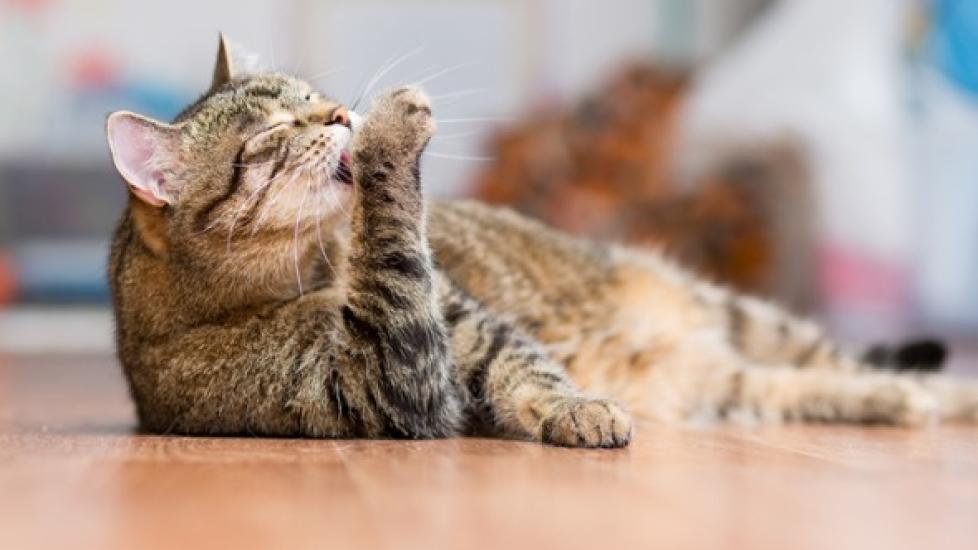Gingivitis in Cats
Gingivitis is considered the earliest stage of periodontal disease, and more than 80% of pets 3 years or older develop some form of periodontal disease. However, gingivitis is reversible with proper care.
Here’s what you need to know about gingivitis in cats and how you can protect your cat’s dental health.
What Is Gingivitis?
Gingivitis is inflammation of the gingiva, or gums.
In the early phases of gingivitis, some plaque is present on teeth and there is a mild redness of the gums, but the gingival surfaces are smooth. Plaque is the result of food, debris, bacteria, dead cells, and mucus that collects on the teeth. Plaque forms within 24 hours on clean tooth surfaces, which is why frequent teeth brushing is so important.
The gums respond to plaque with swelling, collagen loss, and inflammation.
Advanced Gingivitis in Cats
In advanced gingivitis, cats will have moderate-to-severe redness of their gums, irregular gum surfaces, and plaque and calculus (tartar) under their gums and on their tooth surfaces. Calculus forms when calcium in saliva mixes with plaque, making it hard and difficult to remove.
The gingival sulcus, or gum pocket, is the narrow space between the inner wall of the gum and the tooth. As gingivitis develops, the bacteria present in these pockets irritate the gums and release toxins that destroy the gum tissue.
Symptoms of Gingivitis in Cats
Some signs of cat gingivitis include:
-
Red or swollen gums, especially on the side of the gums facing the inner cheeks
-
Halitosis/bad breath
-
Variable amounts of plaque and calculus on the surface of the teeth
Causes of Cat Gingivitis
Plaque and tartar accumulation is the main cause of gingivitis in both cats and dogs. Here are some predisposing factors that can lead to gingivitis in cats:
-
Old age
-
Crowded teeth
-
Soft food
-
Abnormal chewing habits
-
Not receiving oral health care (no dental cleanings, teeth brushing, etc.)
-
Autoimmune diseases
How Vets Diagnose Gingivitis in Cats
Your veterinarian will perform a thorough physical exam on your cat, considering the history of symptoms and possible conditions that might have led to gingivitis.
You will need to give a thorough history of your cat's health and the onset of symptoms, such as:
-
When the bad breath began
-
What your cat typically eats
-
Whether your cat has had trouble eating/chewing
-
Whether your cat has had any previous health conditions
-
What routines you follow to keep your cat's teeth clean (if any)
-
Which cat dental products you use
Part of the physical involves examining your cat's mouth, but your veterinarian may recommend that you make an appointment for a thorough dental exam, which can only be performed under anesthesia and is often combined with a dental cleaning.
Treatment for Cat Gingivitis
Treatment for cat gingivitis involves removing plaque and tartar from all surfaces of a cat’s teeth (including under the gums) and dealing with any predisposing factors and gum damage that may have occurred.
Your veterinarian will check the depth of the gum pockets. They may need to pull any teeth that are infected, severely damaged, or too crowded.
Your veterinarian may also recommend X-rays of the teeth to determine if the gingivitis has progressed to periodontal disease and to look for infection at the tooth root. The tooth surfaces will be polished, and the teeth will be reexamined after cleaning. Other treatments may be necessary based on the condition of your cat’s teeth and gums.
Your veterinarian will teach you how to help keep your cat’s teeth clean home, and you should make appointments for follow-up examinations.
The frequency of dental exams and cleanings will depend on the stage of periodontal disease your cat is diagnosed with. They may be scheduled once a year, or more frequently if your cat has reached a more severe stage of disease.
Preventing Gingivitis in Cats
You can help maintain your cat's oral health care by brushing or rubbing their teeth with a special finger pad using a veterinary toothpaste. It’s best to brush your cat’s teeth every day (at least every other day). Anything less and plaque and tartar can quickly redevelop, causing gingivitis in your cat.
Your veterinarian may also give you a veterinary antibacterial solution to squirt on your cat's teeth or to add to your cat’s drinking water to decrease plaque buildup.
There may be some cat dental care products that can help you maintain your cat’s dental health as well. Good options are listed below.
Talk to your veterinarian about what is appropriate for your cat.
Featured Image: iStock.com/FaST_9
